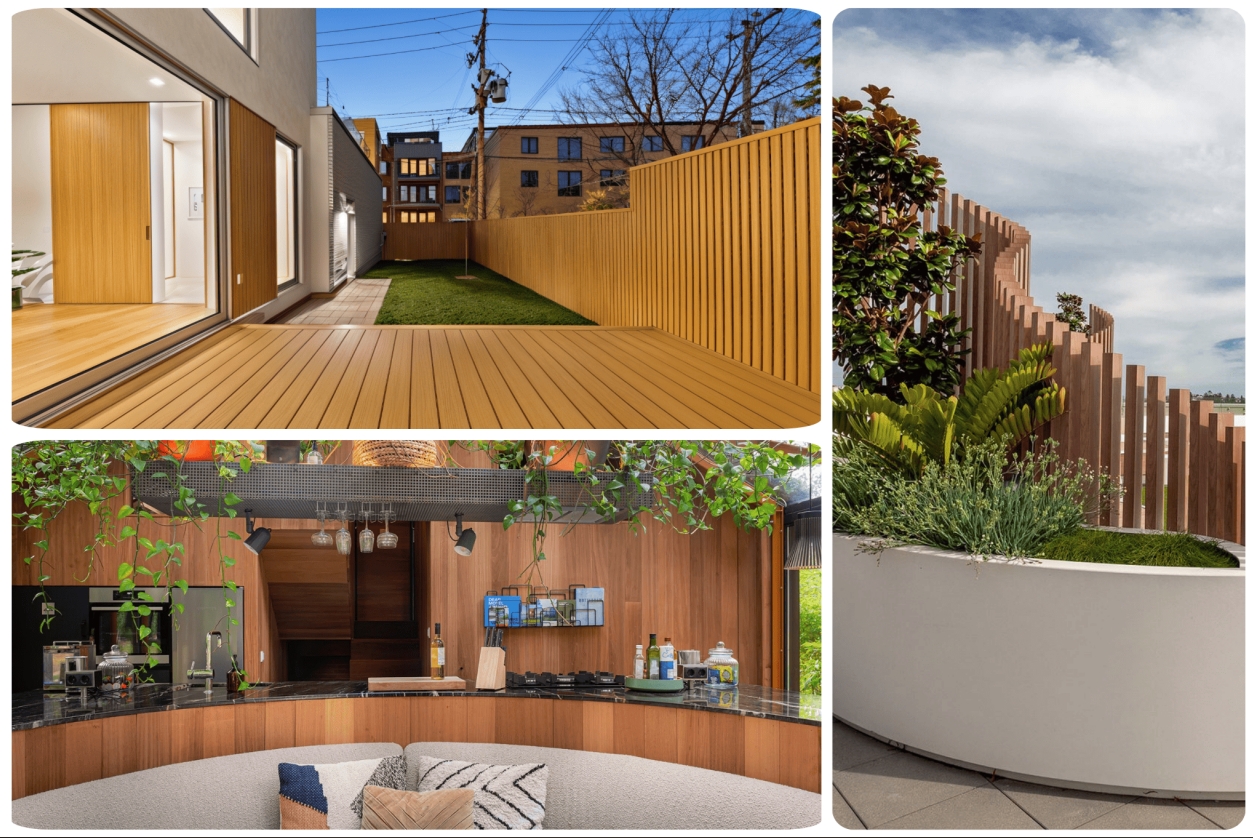QR Code

Contact Us

Phone

E-mail

Address
Nantongbang Industrial Park, No. 80, Fumin Road, Yuanshanbei Village, Changping Town, Dongguan City, Guangdong, China
As a new material that can save wood and replace wood, wood-plastic composite materials are gradually developing into an emerging industry. Especially as energy conservation and emission reduction efforts are continuously strengthened and the circular economy is developing vigorously, wood-plastic composite materials products with advantages such as environmental protection and renewability conform to the general trend of sustainable development and highlight the growing development potential.
In recent years, the gap in wood resources has increased year by year. How to fully and effectively utilize limited resources to protect the environment has become an urgent problem that the home building materials industry needs to solve. At the same time, with the
increasing global environmental awareness, the call for protecting resources and strengthening resource recycling is growing. Under the guidance of green, environmental protection and energy saving, a new material-wood-plastic composite material (WPC) has emerged in the building materials market and has become a new material widely used in the fields of building home decoration, landscape design, etc.

Wood-plastic composite materials are a new type of material with wood fiber or plant fiber as the main component, which is pre-treated to combine it with thermoplastic resin and other materials.
This material not only combines the dual advantages of wood and plastic in terms of performance: it has a good appearance similar to wood, better dimensional stability than wood, no cracks, warping, no wood knots, and diagonal lines. It can be made into various吗colorful products by adding colorants, coatings or composite surfaces. It also has secondary processing properties similar to wood, can be cut, bonded, fixed with nails or bolts, and painted. The product specifications and shapes can be adjusted according to user requirements. It is flexible, not afraid of insects, aging-resistant, corrosion-resistant, low water absorption, no moisture
absorption and deformation, and has the characteristics of durability and long life; the hardness is higher than plastic, and it has the processability of thermoplastic plastics, easy to shape, and can be reused and recycled.
More importantly, wood-plastic composite materials have significant low-carbon and environmentally friendly characteristics. Data shows that the use of 1 ton of wood-plastic composite materials is equivalent to reducing 1.82 tons of carbon dioxide emissions, reducing 1 cubic meter of deforestation, saving 80 barrels of crude oil, and
saving 11 tons of standard coal. Due to its years of focus on the research,development, production and sales of wood-plastic composite materials and green ecological wood profiles, Naikan currently has a very rich product line, including indoor decorative panels and profiles, outdoor building decorative panels and profiles, outdoor garden systems, building shading systems, aluminum green ecological wood composite door and window systems, etc.
In the field of construction engineering formwork, Naikan is the industry leader. Founded in 2009, the wood-plastic building decoration materials company has become the only designated supplier for many well-known domestic real estate developers with its own environmental protection, substitutability, recyclability, and repeated use for more than 30
times. Its products are exported to Thailand, Indonesia, Vietnam, Malaysia and other countries and regions.
Necowood has long been committed to the research and development and production of environmentally friendly building materials, using natural wood powder and national medical-grade resin mixed and manufactured through a molding process. The product does not contain harmful substances such as formaldehyde and has the characteristics of waterproof, mildew-proof, insect-proof, and flame-retardant.
With the continuous breakthrough of industry production technology, new products of Naikemu ASA wood plastic have been launched one after another, with many innovations in raw materials,processes, molds, equipment, etc., and its technology and product quality have reached the international leading level. The demonstration role of leading
enterprises has greatly promoted the rapid development of the industry. At present, wood plastic composite materials have covered four major categories of products in the field of building materials-
Wood plastic home decoration and site materials: including wood plastic decorative profiles, wood plastic floors, skirtings, decking (platforms, road slabs, platforms, pads), wall panels, ceilings, decorative panels, footboards, wall panels, etc., accounting for about 60% of the total material usage, mainly used in the decoration and construction of home decoration, stations, scenic spots, stadiums and other venues.
Wood plastic landscape design materials: including columns, plank roads, guardrails and garden handrails, furniture (outdoor tables and chairs) and other products, used to make landscape design of real estate, parks and scenic spots.
1. See if it is a product of a regular manufacturer. Check the manufacturer's trademark, production address, anti-counterfeiting mark, etc.
2. Check the appearance quality of the product. Check whether the surface is flat, warped, deformed, or non-processed bubbling or dents; check whether the color of the product is uniform.
3. Outdoor wood-plastic materials should have good dimensional stability. If conditions permit, you can saw 200mm long materials and place them at about 80℃ for about 1 hour to see their deformation. If the deformation is large, they cannot be used outdoors.
4. Plain wood-plastic materials do not contain formaldehyde, but the subsequent processing (after film pasting, transfer, etc.) may introduce formaldehyde volatile organic compounds. Some manufacturers may also exceed the heavy metal content of the product due to
improper process. When purchasing, you should consult the environmental performance of the material, and it is best to ask the seller to provide a product test report.
5. When installing wood-plastic products, you should strictly follow the construction specifications provided by the dealer, or ask professionally trained personnel to install them.
6. When signing a purchase contract, you should indicate the grade of the product, the standard based on, and keep some samples as a basis for future judgment of responsibility.

Compared with solid wood, WPC products are easier to maintain——
Dust, dirt and soil pollution of outdoor products can be cleaned with tools or washed with water;
If WPC products are contaminated by shoe polish, nail polish and some other pigments, they can be wiped with a rag dipped in alcohol;
If they are contaminated by soy sauce, vinegar and red wine, they can be cleaned with household detergents. If oil stains appear, they should be wiped immediately;
Try not to use sandpaper for polishing, which will change the surface appearance of WPC materials.




Nantongbang Industrial Park, No. 80, Fumin Road, Yuanshanbei Village, Changping Town, Dongguan City, Guangdong, China
Copyright © 2025 Dongguan Linhong Building Decoration Material Co., Ltd. All Rights Reserved.
Links | Sitemap | RSS | XML | Privacy Policy |
